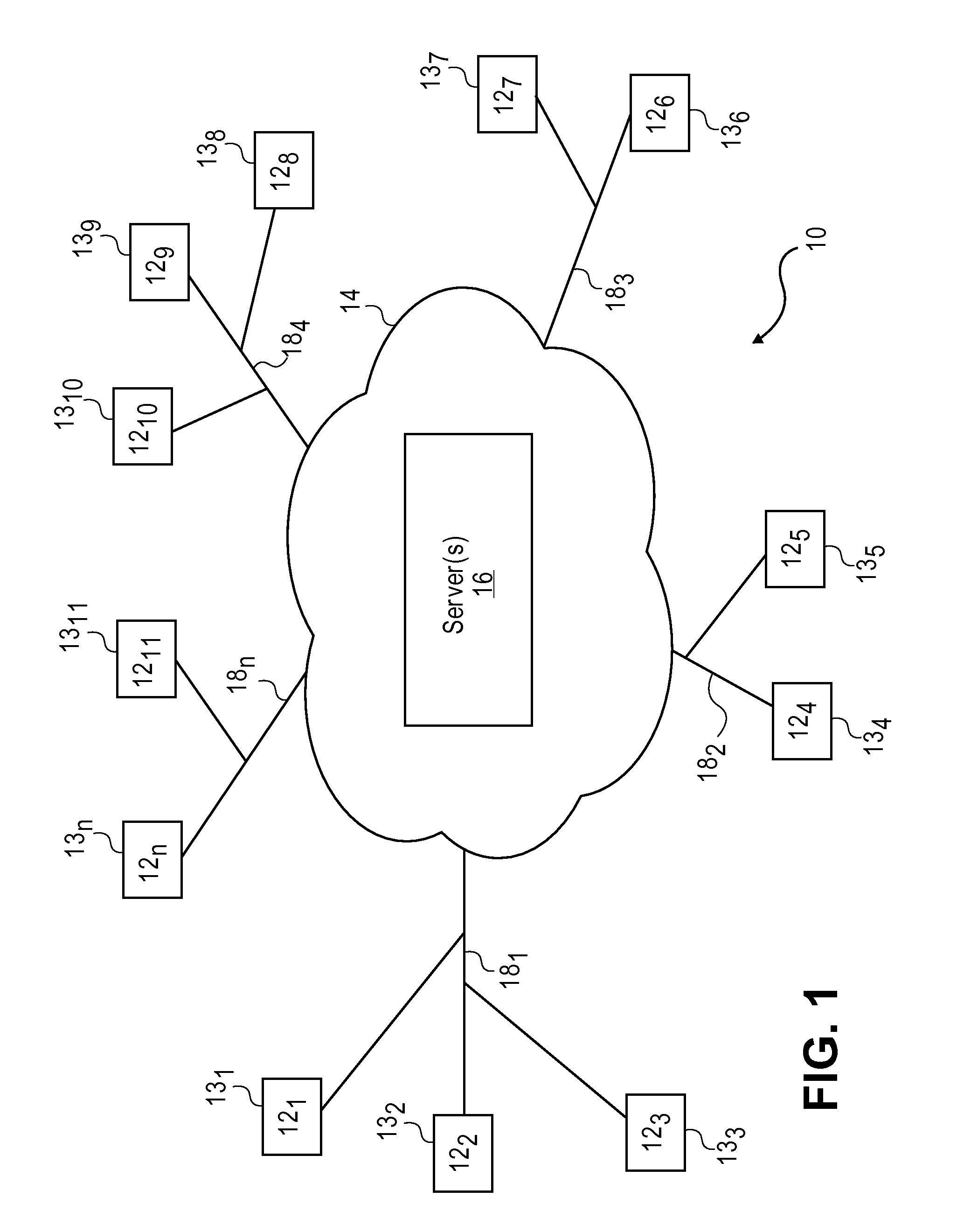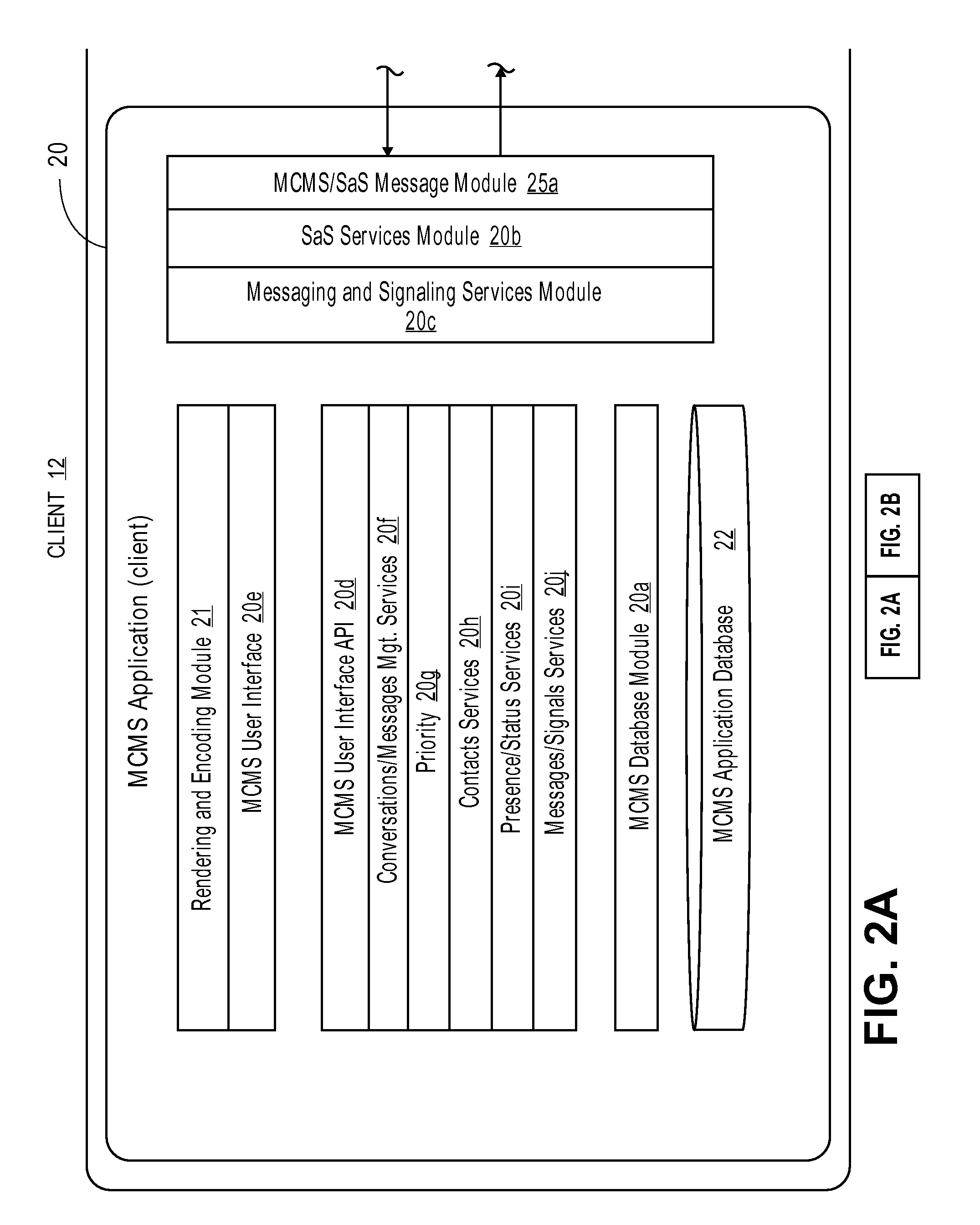The process of delivering the voice mail, however, is burdensome and
time consuming.
Current voice mail systems are also inconvenient for the recipient.
Another drawback with typical voice mail systems is the inability to organize or permanently archive voice messages.
With some voice mail systems, a user may save a message, but it is automatically deleted after a predetermined period of time and lost forever.
Yet another problem with current voice mail systems is that a connection must be made between the caller and the voice mail
system before a message can be left.
If no connection is made, there is no way for the caller to leave a message.
These forms of voice communications do not capture the real power that can be achieved with
voice communication or take
advantage of the advances of network speed and bandwidth that is now available.
Also, if the phone network is down, or is inaccessible, (e.g., a
cell phone user is in an area of no coverage or the phone lines are down due to
bad weather), no communication can take place.
In general, telephone based communications have not kept pace with the advances in text-based communications.
Other than voice mail, there are few existing tools available to manage and / or archive voice messages.
In comparison, the tools currently available to manage telephone communications are primitive compared to text communications.
There is currently no integrated way to manage voice communications across an organization as a corporate asset.
Employees generally do not
record or persistently store their phone conversations.
Most business related
voice communication assets are gone as quickly as the words are spoken, with no way to manage or store the content of those conversations in any manageable form.
Without the ability to organize, store, and later retrieve these conversations, there is no way for the executive to resolve potential issues that may arise, such as recalling the terms of one deal versus another, or challenging a customer who disputes the terms of a previously agreed upon sale.
Current tactical radio systems, such as those used by the military, fire, police, paramedics, rescue teams, and first responders, also suffer from a number of deficiencies.
Urgent messages cannot be sent if either the sender or the
receiver does not have access to their radio, or a radio circuit connection is not established.
There are no tools for either the sender or a recipient to manage, prioritize, archive and later retrieve (i.e. time-shift) the messages of a conversation that were previously sent.
Yet another drawback with tactical radio communication systems is that only one message can be sent at a time per channel.
If each of the teams is using the same channel, communications may become crowded and
chaotic.
Also there is no way to differentiate between high and low priority messages.
If high priority messages are stepped on by
lower priority messages, it could not only hamper important communications, but could endanger the lives of the fire fighters and victims in the building.
This solution, however, creates its own set of problems.
While multiple channels can alleviate some issues, it can also cause
confusion, creating more problems than if a single channel is used.
The lack of management tools that effectively prioritize messages, that allow multiple conversations to take place at the same time, that enable the time-shifting of messages to guarantee delivery, or that support archiving and storing conversations for later retrieval and review, all contribute to the problems associated with tactical radios.
Packets may be dropped in transit and not available when attempting to render the data as soon as possible at the destination.
This
delay makes TCP impractical for use with “live” phone calls.
Currently there are no known protocols that offer the performance advantages of both TCP and UDP, where “good enough” media can be transmitted for rendering as soon as possible, with the eventual delivery of a perfect copy of the media.
Also there is no protocol that determines how much information should be sent over the network based on the presence of recipients on the network and their intentions to render the data either live or in a time-shifted mode.
Prior art systems, however, do not consider the presence and intentions of recipients.
When a recipient is not going to render data immediately, these prior art systems unnecessarily use bandwidth when it is not needed, degrading the overall performance of the network.
For the reasons recited above, telephone,
voicemail and tactical voice communications systems are inadequate.
 Login to View More
Login to View More  Login to View More
Login to View More 


